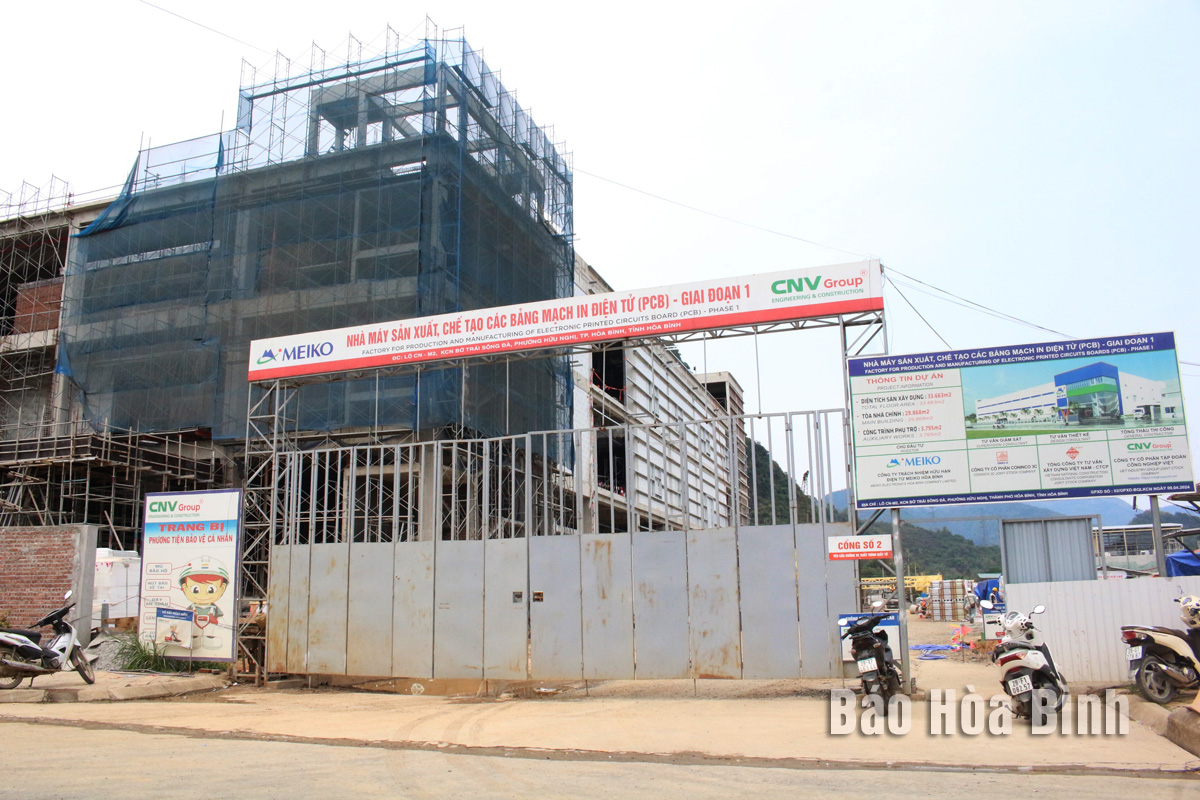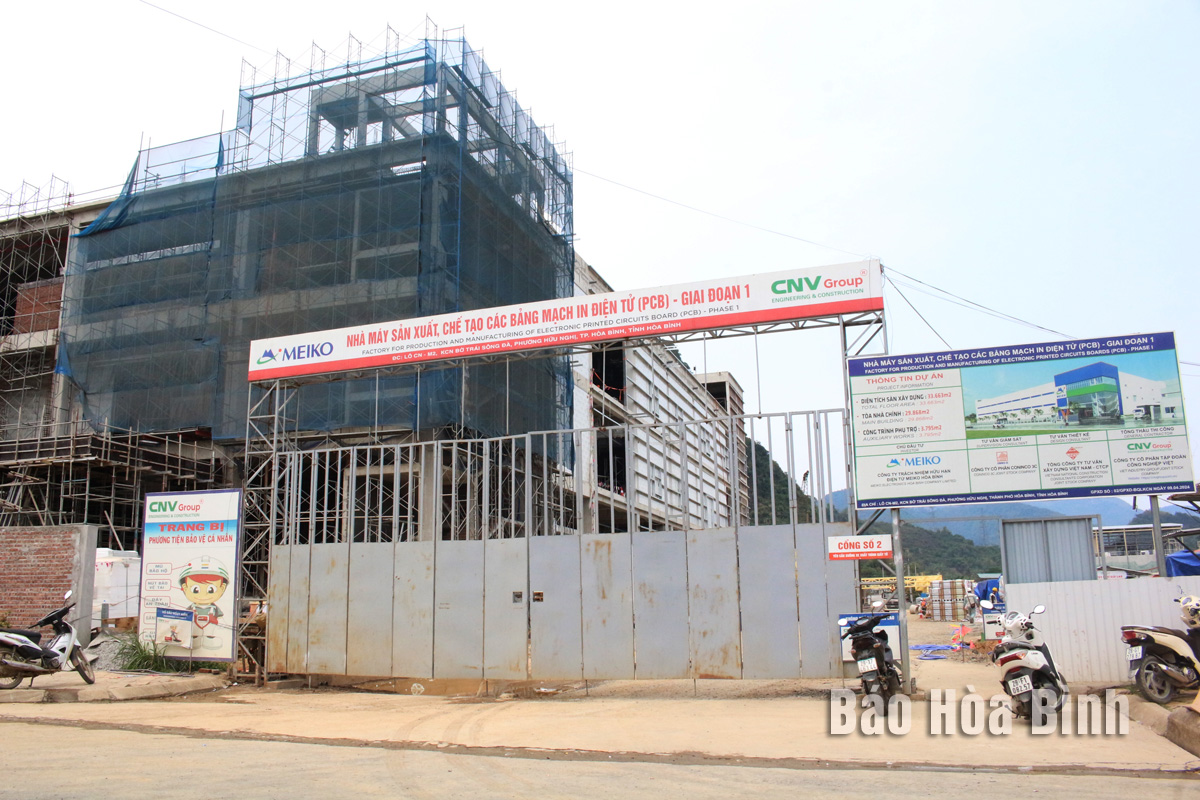
As part of efforts to restructure and accelerate the development of its industrial and handicraft sectors, Hoa Binh province is focusing on the development of industrial parks (IPs) and industrial clusters (ICs) with synchronous infrastructure to attract strong investment.
Following comprehensive infrastructure upgrade, the Da River Left Bank Industrial Park (Hoa Binh city) secures a major investment worth over 200 million USD from Japan’s Meiko Group.
According to the Hoa Binh Industrial Park Management Board, five new investment projects were granted registration certificates in the first four months of this year, with a total committed capital of 2.7 million USD and 310.54 billion VND (12.42 million USD). To date, Hoa Binh’s IPs have attracted 117 projects, including 28 foreign-invested ones valued at 435.05 million USD, and 89 domestic projects totaling more than 10.52 trillion VND. Currently, 71 projects are operational, creating local jobs, diversifying the local economic structure, and contributing significantly to the state budget.
Under the province’s master plan for 2021–2030, with a vision to 2050, Hoa Binh aims to develop 16 IPs covering nearly 3,904 ha, eight of which were previously planned and eight newly designated.
On the IC front, the province has outlined 38 clusters totaling around 2,209 ha, including 17 pre-existing and 21 newly added. To date, 15 out of 38 clusters have been officially established, covering a total area of around 705 ha, with an average occupancy rate of 41.3%.
The standing board of the provincial Party Committee stressed the importance of effectively following mechanisms and policies to pool investment resources for infrastructure development both inside and outside IZs and ICs, particularly those located in key economic areas and among the province’s strategic projects.
In the process of attracting investment into IZs and ICs, priority should be given to large-scale industrial projects and reputable enterprises with effective production and business operations, especially those applying high technology in manufacturing, supporting industries, and electronics. Investment in industries serving agriculture and rural development is also encouraged. These efforts aim to strongly support the restructuring of the industry and handicraft sectors toward higher technological content, environmental friendliness, and enhanced added value and competitiveness of industries and products.
According to data from the Hoa Binh Provincial Party Committee, the industrial production index for the first six months of 2025 is estimated to have increased by 20% compared to the same period last year. This marks the highest year-on-year growth rate for this period since 2020.
In the first six months of 2025, Hoa Binh province’s export turnover was estimated at 1.145 billion USD, marking an 18.11% increase compared to the same period in 2024. Import turnover was estimated at $ 804 million, a 17.15% increase, which helped the province maintain a positive trade balance.
The lives of the ethnic minority farmers in Tan Lac district have gradually improved thanks to the new directions in agricultural production. This is a testament to the collective strength fostered through the professional associations and groups implemented by various levels of the district’s Farmers’ Union.
With the motto the "product quality comes first,” after nearly one year of establishment and operation, Muong village’s Clean Food Agricultural and Commercial Cooperative, located in Cau Hamlet, Hung Son Commune (Kim Boi district), has launched reputable, high-quality agricultural products to the market that are well-received by consumers. The products such as Muong village’s pork sausage, salt-cured chicken, and salt-cured pork hocks have gradually carved out a place in the market and they are on the path to obtaining the OCOP certification.
In the past, the phrase "bumper harvest, rock-bottom prices" was a familiar refrain for Vietnamese farmers engaged in fragmented, small-scale agriculture. But today, a new spirit is emerging across rural areas of Hoa Binh province - one of collaboration, organisation, and collective economic models that provide a stable foundation for production.
Maintaining growing area codes and packing facility codes in accordance with regulations is a mandatory requirement for agricultural products to be eligible for export. Recently, the Department of Agriculture and Environment of Hoa Binh province has intensified technical supervision of designated farming areas and packing facilities to safeguard the "green passport" that enables its products to access international markets.



